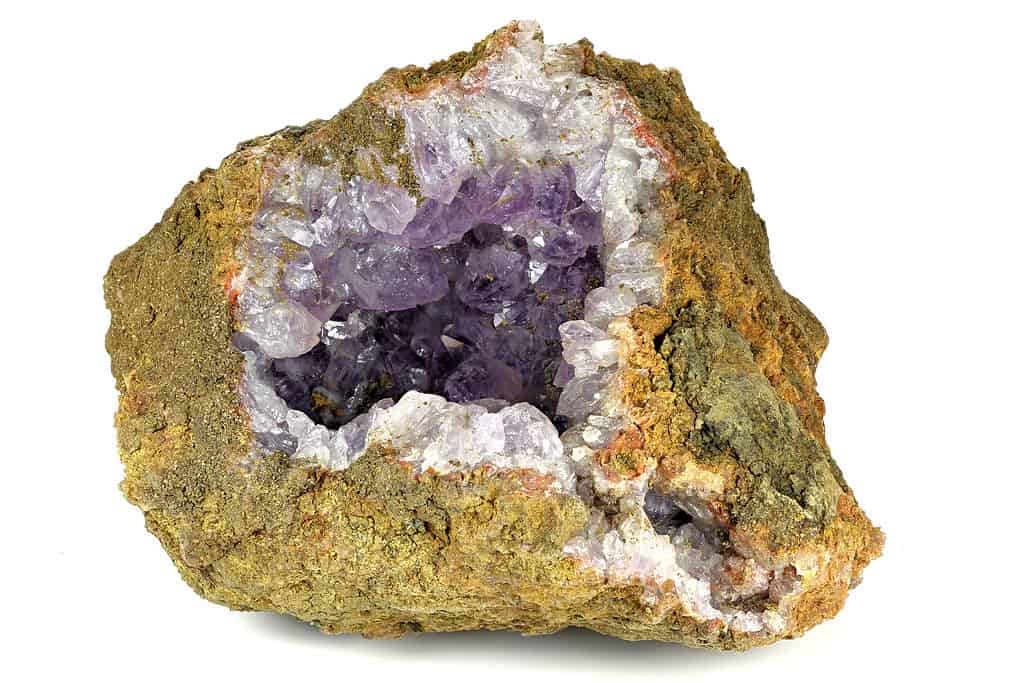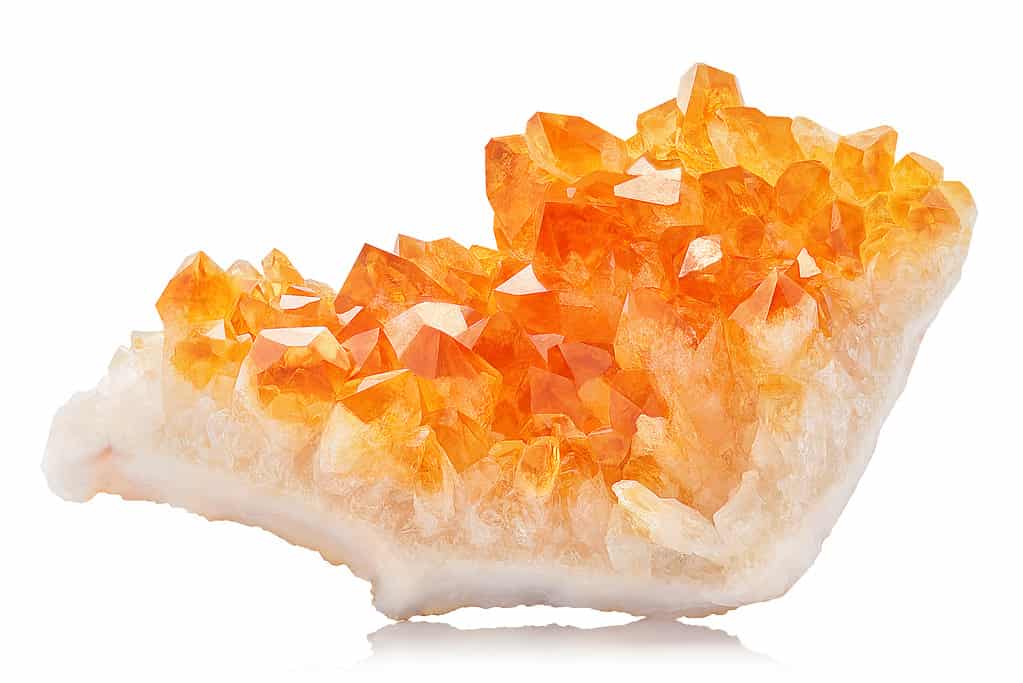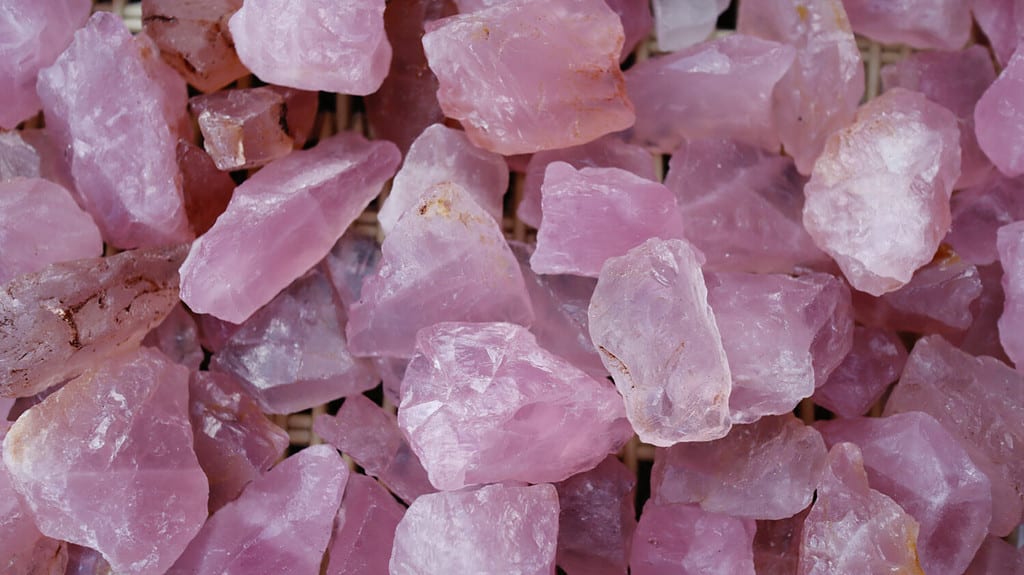Discover 6 Healing Crystals: Types, Meanings, and Origins! – AZ Animals
Introduction
Crystals have been used for millennia to promote many emotional and physical qualities. While some ancient people groups used these stones for practical purposes, such as in the making of weapons and tools, others incorporated them into jewelry to protect against negative forces. While crystals can be used in a variety of ways, many people purchase these stones to bring them positive experiences and emotions. For instance, feelings of joy, compassion, love, motivation, and peace may all be discovered through the ownership and use of crystals. Discover six healing crystals and find out what benefits they can bring.
Bloodstone
Legend says that the bloodstone was first created when the religious figure Jesus Christ was crucified. Supposedly, blood dripped from the cross that Christ was nailed to onto a jasper stone, turning it blood red. Thus, jasper became a bloodstone. Bloodstone was named “heliotrope” in ancient times. The term “heliotrope” derives from Greek, and it describes how the stone turned red at sunset.
The color of the bloodstone is a combination of red and green. Chlorite affects the amount of green in the bloodstone while iron oxide determines how much red is in the bloodstone. Bloodstone typically appears dark green with many little red spots. Two types of bloodstones exist. The original heliotrope appears transparent with red spots while the plasma version is opaque with very little red color.
Bloodstone is an example of a healing crystal that provides many health benefits. Some believe that bloodstones can result in better blood circulation throughout the body. In addition, bloodstones may help heal or mitigate blood-related complications within the body. It is said that bloodstone decreases negative emotions, such as agitation and impatience. Bloodstone may also increase creativity, ideation, and energy.

©vvoe/Shutterstock.com
Obsidian
Obsidian was first discovered and used by the Mayan and Aztec people groups. It was prevalent throughout the region in which these two people groups lived. Thus, the Mayans and the Aztecs used obsidian to create many household items and tools, such as weapons, utensils for eating, and jewelry. Prophets also used obsidian to predict the future. The stone was an extremely significant symbol to these people, as it was said to reveal the truth and was believed to be a god. To the Mayans and the Aztecs, obsidian was one of these most valuable stones, more so than gold.
Obsidian is a volcanic rock that derives from the cooling of lava. Its coloration is a stark black, and the stone appears reflective like glass. While obsidian is typically black, there are several variants that result in different shades, such as snowflake or mahogany. Snowflake obsidian maintains a black background with white, snowflake-looking spots. On the other hand, mahogany obsidian appears bright red with black spots.
Obsidian is a type of healing crystal related to emotional health. Many believe that obsidian aids in the processing of difficult emotions and in the ability to release these emotions. Obsidian is also considered to protect the individual that owns it. Obsidian protects against physical and emotional negativity and emotional blockage. The stone also promotes strength, clarity, compassion, and self-confidence.

©TR_Studio/Shutterstock.com
Amethyst
Scientists have found amethyst jewelry dating back to 2000 B.C. During ancient times, Greeks and Romans thought that amethyst would prevent the powers of the god Dionysus, also known as Bacchus, from overcoming them. Dionysus was the Greek god of wine. Thus, overcoming the powers of this god would allow the Greeks and Romans clarity and wisdom.
In the Old Testament in the Bible, amethyst represented the tribe of Gad within the 12 tribes of Israel. After the influence of Jesus Christ, many believed that this stone represented Christ as God. Some records indicate that Saint Valentine once owned a ring that featured amethyst. Furthermore, amethyst was used in the Middle Ages in England as a symbol of royalty.
Amethyst is a stone that forms within hollow rocks or geodes, which are created by openings in volcanic rock. When geodes deriving from volcanic rock begin to cool, they may create amethyst or other crystals. The stone’s coloration ranges from dark to light purple and may include hints of red or magenta. The stone is extremely durable, and amethyst is often used to create jewelry.
The healing crystal amethyst is believed to have purifying qualities that improve emotional or physical health. Like obsidian, amethyst is considered a protective crystal. The stone may help reduce negative thoughts or emotions. Amethyst might also increase wisdom and humility. Many believe that amethyst helps people make healthier choices and resist the temptations of the flesh. In addition, this crystal may result in better sleep and dreams.

©Bjoern Wylezich/Shutterstock.com
Citrine
Citrine is a type of quartz that was used in several ancient civilizations. Ancient people groups believed that citrine could increase prosperity, fulfill desires, and reduce anger. The Ancient Egyptians used citrine as talismans while the Greeks carved images into the stone. Furthermore, the Romans, specifically priests, incorporated citrine into rings.
Citrine’s coloration appears in several shades of yellow, ranging from a light yellow to a darker, more orange hue. It has several names due to its coloration, including “the sunshine stone” or “the merchant’s stone.” Citrine can be semi-translucent or transparent, and the stone appears like glass.
Citrine is a healing crystal that promotes wealth and happiness. In addition, citrine may also improve focus, creativity, and joy within a person. The stone aids in the release of burdening emotions, such as fear or anger. It helps to clear the mind, thus improving concentration. It may bring feelings of warmth, curiosity, and bliss. Finally, citrine is said to increase prosperity, both financially and emotionally.

©Sebastian Janicki/Shutterstock.com
Sapphire
Sapphire became popular during the Middle Ages, but the stone was used long before this period, too. The Greeks believed that sapphire would help guide them, and Buddhists and Hindus used sapphire for religious purposes, including achieving enlightenment. Some Christian kings wore sapphire in rings for protection. Ancient Hebrews once thought that the Ten Commandments were engraved on sapphire, but many historians dispute this claim. In the Middle Ages, people believed that sapphire could protect against poison and could influence the spiritual realm.
Sapphires occur naturally but take millions of years to form. Furthermore, this stone is one of the rarest in the world. The term “sapphire” derives from the Greek word “sappheiros,” which means “precious blue gem.” The coloration of sapphires is a deep blue that sparkles beautifully. In fact, the sapphire’s color is so incredible that many other blue gems are judged according to the hue of a sapphire, including topaz and aquamarine.
The healing crystal sapphire is known best for promoting prosperity. The stone is also associated with wisdom and royalty. Supposedly, sapphires bring peace, joy, and wealth to their owner. They also may increase clarity, which aids a person in recognizing beauty. Owners of a sapphire might see their mood increase significantly. They may feel more open-minded and experience a better outlook on the world around them.

©photo-world/Shutterstock.com
Rose Quartz
Rose quartz derives from Mesopotamia, current day Iraq, and dates back to 7000 B.C. Rose quartz was first used by the Assyrians between 800 and 600 B.C. to create jewelry. Other people groups that used rose quartz were the Ancient Greeks, Romans, and Egyptians. The stone held different purposes for different people groups. For instance, the Ancient Egyptians believe that rose quartz could slow or halt aging. The Romans used the stone as a symbol of ownership.
Rose quartz occurs naturally and can be harvested as a large raw crystal. The coloration of rose quartz appears light pink. The light pink color of rose quartz comes from the presence of silicon in the crystal. Silicon leaves many impurities in crystals, resulting in several color variations. Rose quartz looks like glass due to its structure and semi-transparent pink coloration.
Rose quartz is a healing stone that promotes love and trust. It is believed that rose quartz can help stabilize relationships. It also may increase a feeling of connection between two individuals. Rose quartz is a comfort stone that can bring peace to those experiencing grief of the loss of a loved one or to those struggling in a relationship. The stone might also help individuals discover their own self-worth and receive respect from their friends, family, or significant other.

©Pranisa Thanatattanon/Shutterstock.com
